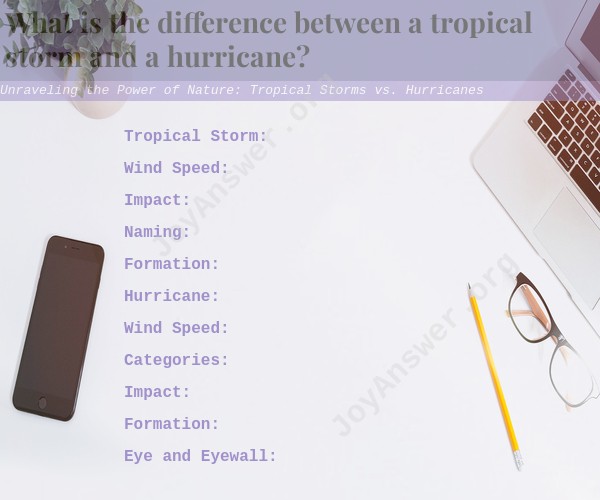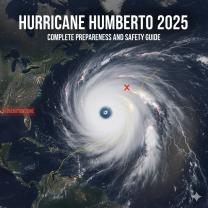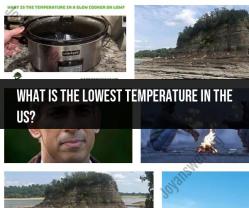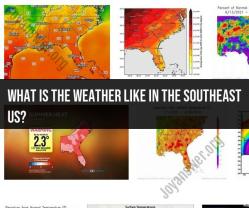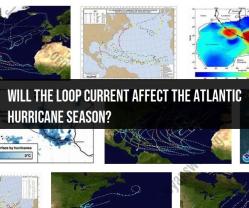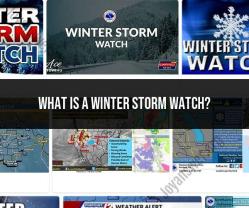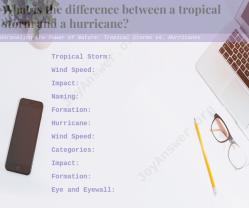What is the difference between a tropical storm and a hurricane?
Tropical storms and hurricanes are both powerful weather phenomena that originate over warm ocean waters. They are both types of tropical cyclones, but they differ in terms of their intensity and characteristics. Here's a breakdown of the key differences between a tropical storm and a hurricane:
Tropical Storm:
Wind Speed:A tropical storm is characterized by sustained wind speeds of 39 to 73 miles per hour (63 to 118 kilometers per hour).
Impact:Tropical storms can cause significant damage, particularly through heavy rainfall, strong winds, and storm surges. However, their impact is generally less severe than that of hurricanes.
Naming:Tropical storms are given names as part of the naming system established by meteorological organizations. Names are chosen from predetermined lists and are used for identification purposes.
Formation:Tropical storms form when warm ocean waters provide the energy needed to fuel the storm's development. As moist air rises from the warm ocean surface, it cools and condenses, creating a low-pressure area that can lead to the formation of a tropical storm.
Hurricane:
Wind Speed:A hurricane is a much more powerful tropical cyclone, characterized by sustained wind speeds of 74 miles per hour (119 kilometers per hour) or higher.
Categories:Hurricanes are classified into categories based on the Saffir-Simpson Hurricane Wind Scale, which ranges from Category 1 (weakest) to Category 5 (strongest). Category 1 hurricanes have sustained winds of 74 to 95 mph, while Category 5 hurricanes have sustained winds exceeding 157 mph.
Impact:Hurricanes are capable of causing extensive damage due to their high wind speeds, heavy rainfall, storm surges, and potential for tornadoes. They can result in significant flooding and destruction of infrastructure.
Formation:Hurricanes form under similar conditions as tropical storms, with warm ocean waters providing the energy needed for their development. As the storm intensifies, it can reach hurricane strength if wind speeds exceed 74 mph.
Eye and Eyewall:Hurricanes have a distinct center called the "eye," which is a calm area surrounded by the "eyewall" where the strongest winds and heaviest rainfall occur.
Naming:Hurricanes are also named as part of the naming system. If a hurricane's impact is particularly severe, its name may be retired from future use.
In summary, the primary difference between a tropical storm and a hurricane lies in their wind speeds and intensity. Tropical storms have lower sustained wind speeds and generally cause less severe impacts compared to hurricanes, which have much stronger winds and can result in more extensive damage. Both tropical storms and hurricanes are closely monitored by meteorological agencies to provide timely warnings and preparations for communities that may be affected by these powerful weather events.
